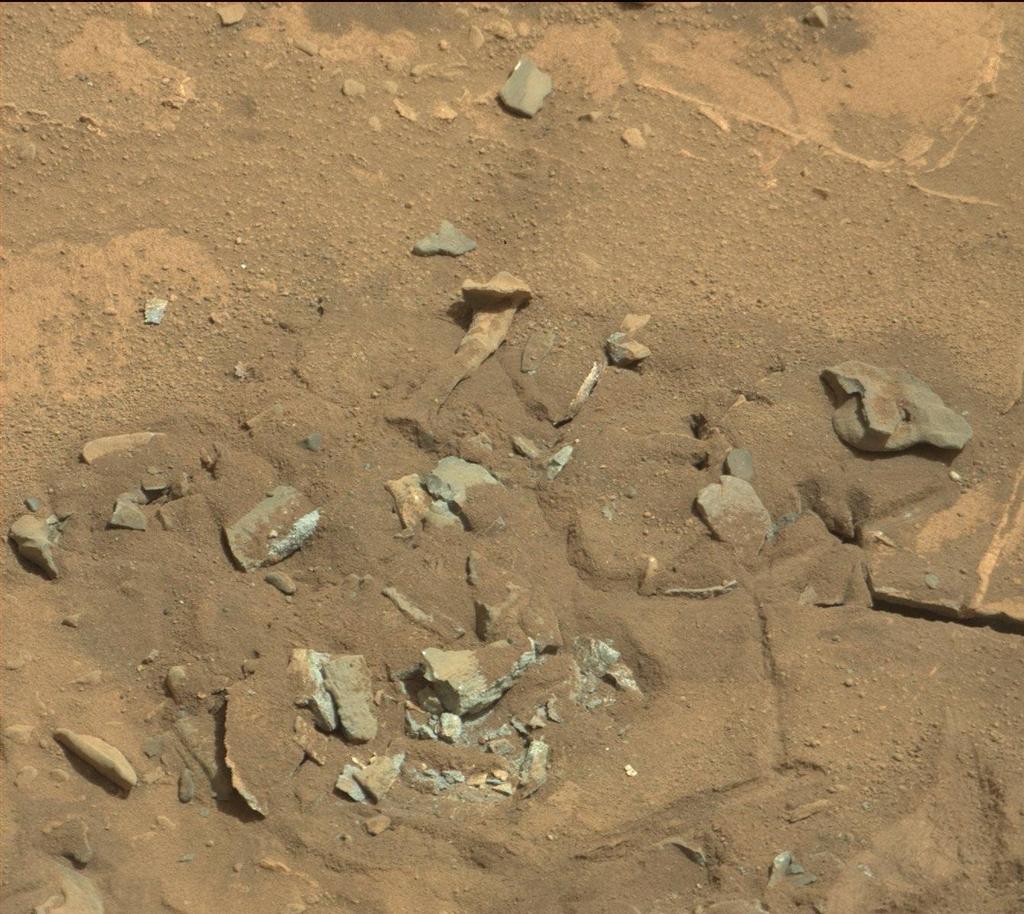'Thigh Bone' on Mars Is Just Another Rock, NASA Says

A photo from NASA's Curiosity rover on Mars set the Internet abuzz this week with claims that the robot had found a "thigh bone" on the Red Planet. But not so fast. That so-called bone? Just a weathered Martian rock, NASA says.
The erroneous bone claim first appeared on a UFO blog and was quickly picked up by media outlets. So much so, that NASA released Curiosity's "thigh bone" Mars rock photo with a science explanation on Thursday (Aug. 21).
In the photo description, NASA officials wrote that while "this Mars rock may look like a femur thigh bone," it is not the fossilized remains of a mysterious Martian. "Mission science team members think its shape is likely sculpted by erosion, either wind or water."
The Curiosity rover has found evidence that Mars was once a habitable place in the ancient past, but there is no evidence that creatures large enough to leave a bone behind ever existed on the planet.
"If life ever existed on Mars, scientists expect that it would be small simple life forms called microbes," NASA officials wrote in the photo description. "Mars likely never had enough oxygen in its atmosphere and elsewhere to support more complex organisms. Thus, large fossils are not likely."
There is a long tradition of seeing shapes in Mars rocks that don't reflect reality. The phenomenon in which the human brain perceives faces, animals or other shapes that aren't really there is known as pareidolia.
Since the "Face on Mars," photos from Mars orbiters and rovers have captured shapes resembling a lizard, a rat and even a jelly donut — all of them just illusions or strange rock formations on the Red Planet.
Breaking space news, the latest updates on rocket launches, skywatching events and more!
NASA's 1-ton Curiosity rover has been exploring Mars since its arrival in August 2012.
Email Tariq Malik at tmalik@space.com or follow him @tariqjmalik and Google+. Follow us @Spacedotcom, Facebook and Google+. Original article on Space.com.

Tariq is the award-winning Editor-in-Chief of Space.com and joined the team in 2001. He covers human spaceflight, as well as skywatching and entertainment. He became Space.com's Editor-in-Chief in 2019. Before joining Space.com, Tariq was a staff reporter for The Los Angeles Times covering education and city beats in La Habra, Fullerton and Huntington Beach. He's a recipient of the 2022 Harry Kolcum Award for excellence in space reporting and the 2025 Space Pioneer Award from the National Space Society. He is an Eagle Scout and Space Camp alum with journalism degrees from the USC and NYU. You can find Tariq at Space.com and as the co-host to the This Week In Space podcast on the TWiT network. To see his latest project, you can follow Tariq on Twitter @tariqjmalik.

